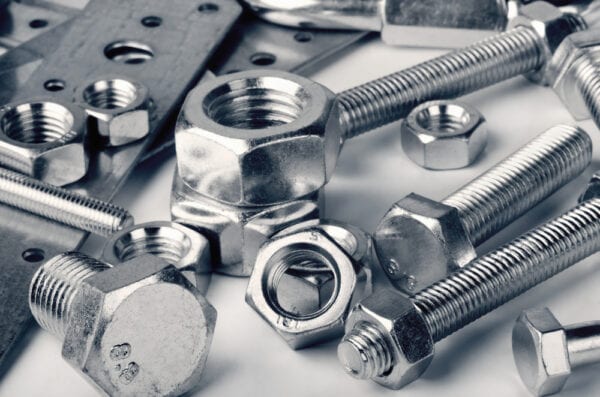
Key Takeaways:
- MRO inventory is critical to maintenance operations, yet not managed as closely as other inventory, leading to direct and indirect maintenance costs
- MRO inventory management requires the identification, specification, location, procurement, and control of inventoried items
- Computerized maintenance management system (CMMS) software, like FTMaintenance, is designed to help you effectively manage your maintenance inventory
Maintenance teams depend on hundreds to thousands of different materials and supplies to keep assets running. This type of inventory, known as maintenance, repair, and operations (MRO) inventory, includes spare parts, lubricants, tools, safety gear, and other consumables that do not make it into the final product (or service).
Yet, while 94% of industry professionals view MRO inventory as being extremely or somewhat important, it is typically not managed as closely as production inventory. As one can imagine, poorly managed inventory is a real headache for the maintenance department. This article explains MRO inventory management and how it impacts the maintenance process – and ultimately an organization’s bottom line.
What is MRO Inventory Management?
MRO inventory management, or maintenance inventory management, is the process of procuring, storing, using, and replenishing the materials and supplies used for maintaining assets at the lowest possible cost. This process involves ensuring you have stock on hand while factoring in available storage space and budget. To put it simply, the goal of MRO inventory management is to have the right stock at the right time and place, and at the right cost.
Why MRO Inventory Management is Important
The importance of a properly managed maintenance inventory is fairly clear when you consider all the direct and indirect costs. Consider the following common scenarios:
Production Stoppages
If MRO inventory keeps assets running, what happens when materials and supplies run out? Production screeches to a halt! Meanwhile, you pay a premium for expedited shipping while operators and technicians are on standby, waiting for parts to arrive. This major increase in downtime makes the total repair cost skyrocket. If you simply cannot wait to restore assets, you must use risky stopgap measures that could endanger product quality or safety.
Overstock
Having too much inventory can also be a problem. Perhaps you attempt to avoid stockouts by ordering extra parts, only to find that they are seldom used. Alternatively, maybe you panic-purchased a part you knew you had, but just couldn’t find at the time you needed it. In either case, excess inventory sits on a shelf, further cluttering your stockroom. Even worse, you cannot reclaim the money spent.
Losses in Productivity
Finally, let’s not forget how poor MRO inventory management affects day-to-day operations. By some estimates, technicians spend as much as 25% of their time trying to secure parts. While this may only increase downtime a little bit each time, it quickly adds up. Not to mention, there’s also a fair amount of frustration that goes along with not being able to find a part you need.
To remedy this problem, some technicians create their own “private” inventories of materials in their toolboxes or in desk drawers. Though it may be convenient for the individual, this inventory is not available for other technicians when needed. Due to the inaccurate stock counts, the organization may face production stoppages, overstock, duplicated orders, and other bottlenecks in the maintenance process.
Components of MRO Inventory Management
The core components of MRO inventory management are identification, location, procurement, and inventory control, described below. As you read each section, think about how each resolves the problems stated above.
Identification
Swift, effective maintenance relies on knowing exactly what MRO items are kept in stock in your maintenance inventory. Maintenance teams are often judged based on response time, so being able to quickly identify the materials you need for a job is crucial.
Consider that manufacturers may use different parts in their designs, even for similar types of equipment. It is possible that no two machines may share the same parts or require the same supplies. This reality is even more visible when looking at a supplier’s parts catalog. For example, hardware supplier McMaster-Carr lists over 56,000 different types of fasteners!
Maintenance inventory management can be improved simply by identifying what items are stocked. To further assist with identification on an asset level, maintenance teams reference an equipment bill of materials.
Specification
Related to identification is specification. The specification provides the requirements of the spare parts or supplies to ensure an asset’s proper operation. For example, a standard screw has the following attributes, each of which is considered during an asset’s design:
- Thread size
- Length
- Diameter
- Head type (e.g., socket, rounded, flat, hex, etc.)
- Material (e.g., brass, lead, steel, zinc, etc.)
- Drive style (e.g., Phillips, square, slotted, etc.)
How does this affect maintenance? Part specifications define exactly what is needed for optimal asset performance and dictate the tools used to install or utilize the part. In the case of the screw, it’s more efficient for a technician to know which wrench or drill bit will be needed ahead of time. For items that require specialized tools, technicians benefit by ensuring they are available to be checked out ahead of time.
Specifications are also useful when alternative parts or supplies are needed. Tracking specification helps you identify similar, interchangeable parts. In terms of purchasing and reordering, specifications are used to identify vendors that carry the part.
A third way that specification affects maintenance is organization. A stockroom employee may arrange inventory items by their characteristics, such as size, weight, material, shape, and so on. As you’ll read in the next section, an organized stockroom makes MRO items easier to find for technicians.
Location

Once you know what MRO inventory items you have in stock, you must be able to locate them. As mentioned earlier, poor organization leads to unnecessary costs related to expedited orders or losses in productivity. Knowing exactly where MRO inventory items are stored helps improve responsiveness and allows you to fulfill maintenance work orders more efficiently. Locating inventory comes down to creating an organization system and communicating that system with others.
Organization
Depending on the size of your organization, MRO inventory may be spread out across multiple stockrooms or contained within a single storage location. Within those locations, there may be multiple aisles, racks, shelves, and bins. Technicians may keep a personal stock of items in tool chests or service vehicles. Because there are so many places MRO inventory might be stored, you must have a system for organizing the items.
In a grocery store, for example, aisles are numbered, and related items are typically located together. Ask any store clerk about the location of an item, and they can surely tell you what section and aisle to look in. They may even be able to tell you a more precise location, such as “about halfway down, at eye level,” if not the exact shelf.
Similarly, stockrooms and storage locations ordinarily use a letter or number scheme to organize their aisles, racks, shelves, and bins. Like a grocery store, physical labels are affixed to the location, making inventory items easy to find.
Communication
Once items are organized, you must communicate the organization system to others. Appropriate stakeholders should know exactly how things are organized and understand how to interpret naming or numbering conventions. Locations can also be communicated through a maintenance inventory management system such as computerized maintenance management system (CMMS) software.
Procurement
Procurement is the process of obtaining goods or services, such as MRO inventory items, in a cost-effective and time efficient manner. It includes all the activities that take place from the initial requisition to final payment and receipt of goods. In simple terms, the procurement process is how you acquire the MRO inventory items needed for maintenance jobs.
The level of authority given to the maintenance team to make purchases differs from organization to organization. In general, the procurement process will look similar to the following:
- Identify MRO Inventory Items Needed: Determine what materials and supplies – and stocking levels – are needed for efficient maintenance activities.
- Generate Purchase Requisition: Create a purchase requisition that includes details such as what items are needed, the recommended vendor, and the date the items are required. Submit the requisition to for approval.
- Get Purchase Approval: Submit the requisition for review. The purchaser will assess the requisition for completeness and priority. Assuming that the requisition is approved, proceed with the purchase.
- Select Vendor(s): Identify the best vendor to fulfill the order requirements. Vendor selection criteria may include price, quantity ordered, speed of delivery, customer service, and prior relationships.
- Create and Issue Purchase Order: Create a purchase order (PO) and issue to the vendor.
- Receive Order: When the shipment is received, review the delivery, record the items in the inventory tracking system, and stock the items in the appropriate location(s).
Inventory Control

Inventory control ensures the right amount of stock available to the organization so that maintenance can be performed efficiently. It involves knowing what you have, where it is located, and how much of it is on hand. When combined, this information helps those who manage MRO inventory avoid stockouts and ultimately, costly asset downtime.
On the surface, it may sound like inventory control simply means reordering supplies when quantities are low. However, this is only one aspect of inventory control. Proper inventory control also includes regularly counting stock, tracking usage and movement, and anticipating future demand. When it comes to replenishing stock, you must also think about when to place orders, delivery lead times, available storage space, and ways to minimize ordering costs.
MRO Inventory Management Tools
Due to the relatively lax requirements of managing maintenance inventory (compared to other inventory), MRO management tools are typically less robust. In fact, it is not unusual for small businesses to have administrative staff manually track MRO inventory in spreadsheets. Large organizations use enterprise resource planning (ERP) software, though the MRO inventory management capability is often lacking.
Effective maintenance teams benefit from using computerized maintenance management system (CMMS) software for inventory management. With a CMMS, you can leverage functionality designed specifically to help you manage your maintenance inventory. A good CMMS provides the following:
- Comprehensive inventory records
- Automatic MRO inventory count updates
- Reorder point notifications
- Inventory cost tracking
- Vendor and supplier management
- Purchasing capability
- Inventory-focused maintenance reports
Read Cadeco Industries Case Study
Manage MRO Inventory with FTMaintenance
The disorganization of MRO inventory management means there’s ample opportunity for improvement. In fact, some organizations estimate that proper MRO inventory management reduced their inventory spending by as much as 25%!
With FTMaintenance, you can take advantage of these cost savings while increasing your asset’s availability. FTMaintenance CMMS software helps organizations improve their MRO inventory management processes and procedures. Learn more about FTMaintenance inventory management system software.